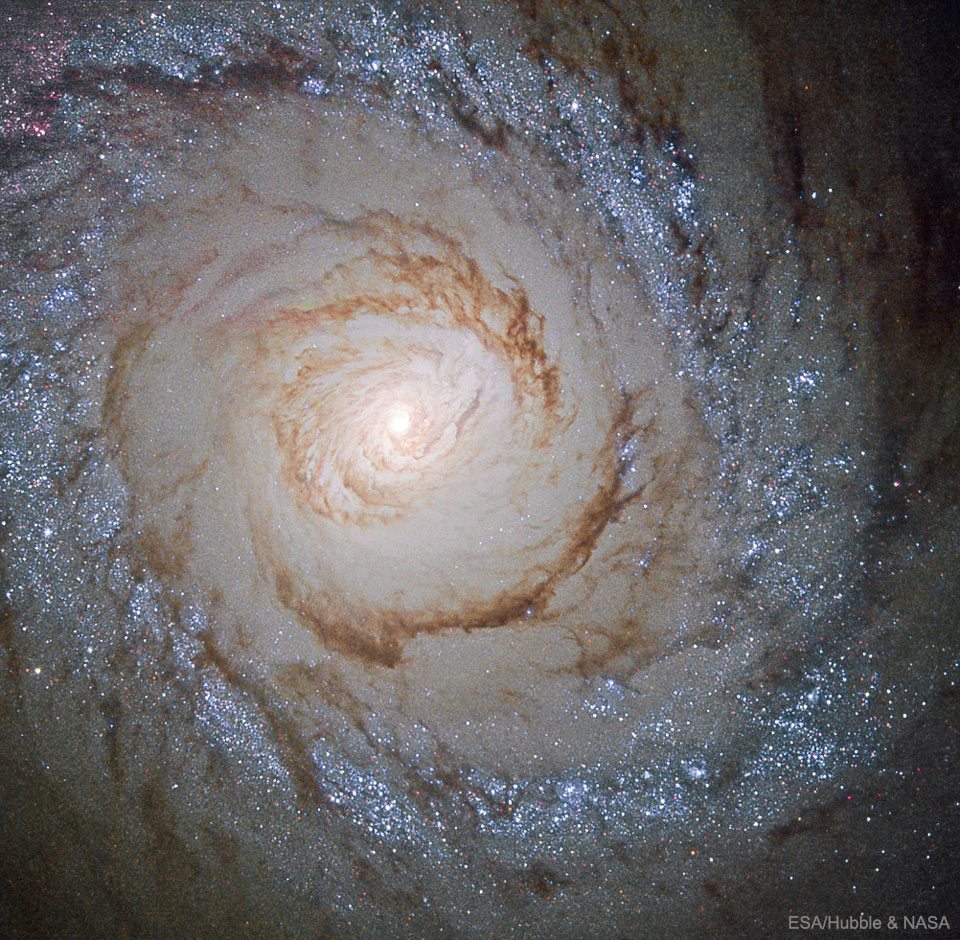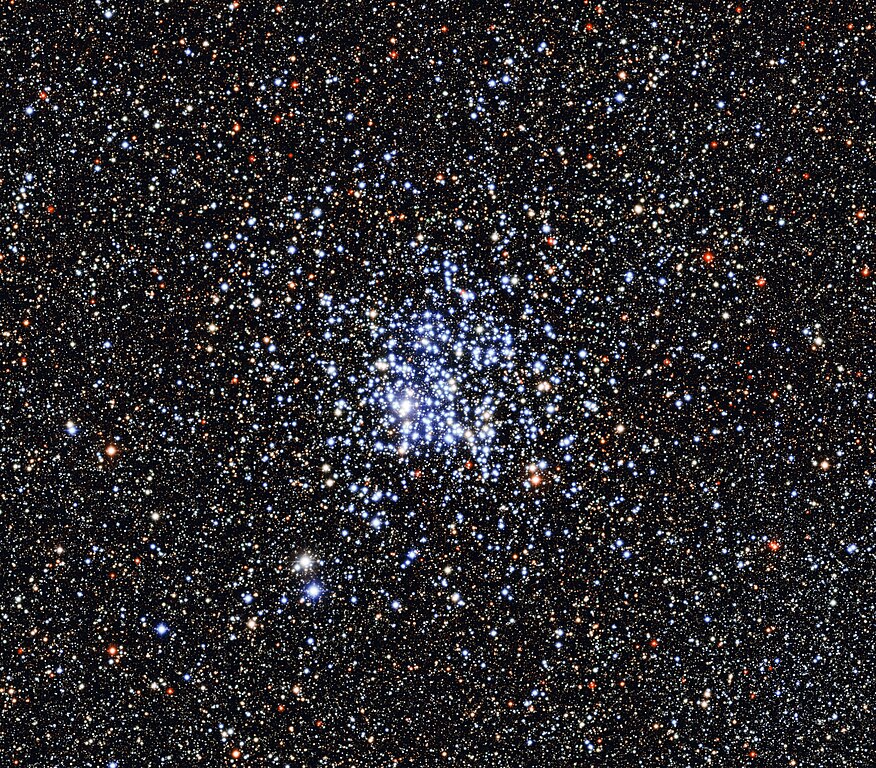I love this galaxy, and I love this Hubble image of it!

I love the fact that the bright center is yellow-white, and I love the fact that the smooth bright area outside the center is ever so slightly greenish. This color contrast is extremely obvious in James D. Wray's
Color Atlas of Galaxies, where galaxies are shown in UBV. The greenish area contains a larger proportion of A- and F-type stars than the bright yellow center does.
Of course, what I love best about this Hubble image is the exquisitely lovely "tiara" of brilliant blue-white sapphires, interspersed with red giant rubies, that M94 is wearing around its bright green and yellow "head"!
It is really striking how both the bright yellow center and the faintly greenish area surrounding it are "smooth", whereas the garland of blue stars is extremely grainy. Very many of the blue stars pop out at us individually, because they are so bright (and they are seen against a not-so-bright background), whereas the stars near the center of M94 are typically much fainter, and they are seen against a much "starrier" background too, where the light from individual stars tend to blend together.
This brings us to the question of stellar populations are typically like. How bright do stars of different spectral classes tend to be, and what color are they?
Let's start with a picture of the rich Wild Duck Cluster, M11, whose estimated age is around 300 million years:
I apologize to bystander for posting a picture that is too big, but it is not
that big after all.
The Wild Duck Cluster is rich in bright blue-white stars, but there are also a number of bright yellow-white stars. The yellow stars are evolved red giants, whereas the blue stars belong to spectral classes A and F. At least one of them, HD 174512, is evolved and brighter than it used to be.
The bright stars in M11 clearly look brighter than the background stars. Note that some very red stars are scattered all over the background. My guess is that many or most of these are very dust-reddened background stars, although some might be extra cool M-type giants (or even, in a few cases, very nearby M-type dwarfs).
But what does a typical galactic bulge of yellow stars look like close up, when zoomed in?
As you can see, most of the stars in the bulge of the Milky Way are small stars. The ones we can see in the picture probably belong to spectral classes G and K, whereas most main sequence stars of spectral class M are probably too faint to show up here. The bright stars are probably in most cases evolved giants, though a few may be foreground stars, perhaps in some cases of spectral classes A and F.
Finally, look at this picture of Andromeda by Hubble:
But go to
this page, read the caption and find the zoom tool. And then you can use the zoom tool to zoom in and zoom in to Andromeda and marvel at the enormous numbers of individual stars that can be resolved everywhere, even near the core. Because there are individual bright stars everywhere, at least red giant stars, even in the reddest and deadest galaxies or in the yellowest parts of galaxies.
Ann
 Starburst Galaxy M94 from Hubble
Starburst Galaxy M94 from Hubble



